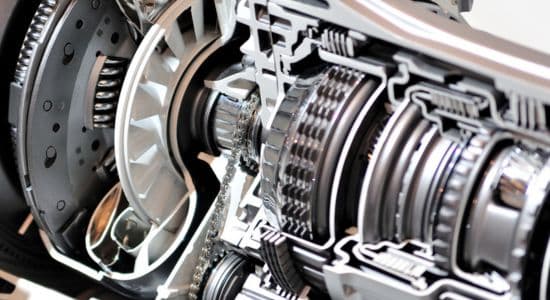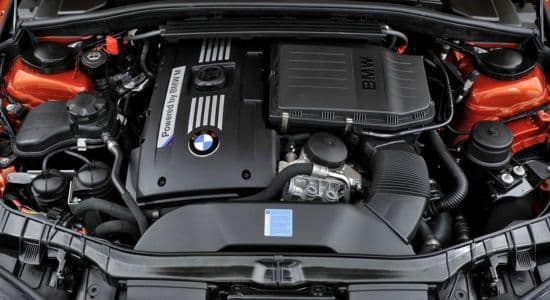BMW Transmission Lineup: Evolution of Shifting Mastery

BMW's quest for driving purity has always hinged on transmissions that bridge driver intent with mechanical response. From the raw engagement of early Getrag manuals to the seamless intelligence of modern ZF automatics, the brand's gearboxes have continuously redefined performance benchmarks. This overview spans manual, dual-clutch, and torque-converter automatic families, encompassing everyday applications and extreme M-division variants.
Classic Manual Gearboxes: Getrag and ZF Foundations
The legacy began with Getrag-built units that defined BMW's analog era. The Getrag 260 5-speed, with its lightweight casing and precise gating, powered E30 and E36 models, often featuring a dog-leg first-gear layout in sport variants for quicker 2-3 shifts.
The 6-speed era arrived with the Getrag 420G in the E46 M3, perfectly matched to the S54's high-revving character. Its short throw and robust synchros made it a favorite for modifications.
ZF contributed heavily with units like the S5D 320Z and later GS6-series 6-speeds. The GS6-37BZ in diesel applications handled massive torque, while carbon-coated synchronizers in M versions ensured durability under aggressive use. These manuals emphasized tactile feedback, progressive clutch feel, and ratio spacing that rewarded heel-toe downshifts.
Dual-Clutch Revolution: M DCT Precision
BMW embraced dual-clutch technology with the 7-speed M DCT (Getrag GSK7DCI), debuting on the E90 M3. Wet clutches and electro-hydraulic actuation delivered shifts in under 100 milliseconds, with Drivelogic offering multiple personalities—from smooth urban creeping to violent track launches.
Refinements in F80/F82 M3/M4 and F10 M5/M6 variants added integrated oil coolers and predictive pre-selection. The system excelled in maintaining boost during shifts, making it ideal for turbocharged power delivery. Despite its brilliance, complexity and evolving emissions requirements led to its gradual replacement by torque-converter automatics in most M cars.
Torque-Converter Automatics: ZF's Enduring Dominance
While early BMWs used GM-sourced units, the partnership with ZF truly transformed automatic performance. The 6HP family introduced adaptive shifting and lock-up in most gears for direct feel.
The game-changer was the ZF 8HP series—lightning-fast, widely spread ratios, and navigation-linked predictive logic. First-generation 8HP45/50/70/75 variants balanced efficiency with responsiveness across 1 Series to 7 Series.
Subsequent evolutions added hybrid compatibility, coasting functions, and reinforced components for high-torque B58 and S58 engines. M Steptronic calibrations transform the same hardware into ferocious units with sub-100ms shifts and aggressive downshift blips.
Transverse-platform models (UKL architecture) employ Aisin 8-speeds optimized for front- and all-wheel-drive layouts, while longitudinal RWD/AWD cars remain loyal to ZF.
Manual Resurgence in Modern M Cars
In response to enthusiast demand, BMW brought back three-pedal options starting with the G8x M3/M4. The ZF 6-speed manual—lightweight, with carbon synchronizers and switchable rev-matching—pairs exclusively with rear-wheel-drive configurations.
A similar unit appears in the G87 M2 and Z4 M40i Handschalter package, tuned for each model's character. Though slower in outright acceleration than their automatic counterparts, these gearboxes deliver unmatched driver involvement and have become highly sought-after specifications.
High-Performance and Hybrid Integrations
Top-tier M models (M5, M8, XM) rely on heavily reinforced 8-speed ZF units capable of managing over 1000 Nm, with multi-plate clutch packs and dedicated cooling circuits.
Plug-in hybrids seamlessly blend electric motors within modified 8HP housings, enabling pure-electric driving while preserving full shifting functionality when the combustion engine engages.
Current Transmission Philosophy
Today, the ZF 8HP family powers the vast majority of BMW production, continually refined for quicker response, better efficiency, and deeper electrification integration. Manual transmissions survive in select pure-petrol M cars as a deliberate choice for driving purists.
From the mechanical purity of a perfectly executed heel-toe downshift to the effortless precision of an 8-speed predicting the next corner, BMW transmissions remain central to the brand's identity—evolving constantly while staying true to the joy of driving.

